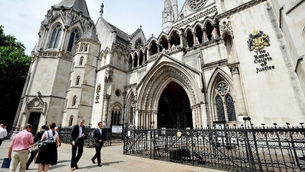
Enforcement Services – Recover What’s Rightfully Yours
Winning a judgment is a significant step—but it means little if the debt remains unpaid. Taking swift and decisive enforcement action is often necessary to ensure you receive the funds you are owed.
At Montpelier Solicitors, we offer a comprehensive range of enforcement solutions designed to secure payment quickly and efficiently. Whether you need to seize assets, freeze funds, or recover debts through salary deductions, we have the expertise to help.
Our Enforcement Solutions
-
Writ of Control & Warrant of Execution - Seizure and Sale of Assets
One of the most direct enforcement methods, which allows for the seizure and sale of a debtor’s goods to recover your judgment debt. It does not require a court hearing and can be enforced against both individuals and businesses. Benefits:
✔ Straightforward
✔ Effective when debtors have tangible assets
✔ Can be used alongside other enforcement methods
-
Third Party Debt Orders – Freezing and Recovering Funds
If your debtor has funds held by a third party, such as a bank or another business, this order allows you to freeze those funds and recover them directly. It prevents debtors from moving money out of reach. Benefits:
✔ Ideal when a debtor has known bank accounts or incoming payments
✔ Quick access to available funds
✔ Can be combined with other enforcement actions
-
Charging Orders & Orders for Sale – Securing Debts Against Property
If your debtor owns property or assets, a charging order secures your debt against that property/ asset, ensuring that you are paid when the property is sold. If necessary, we can take further action through an order for sale, forcing the sale of the property to recover your funds. Benefits:
✔ Protects your debt by securing it against valuable assets
✔ Interest continues to accrue, increasing your recovery amount
✔ Suitable for high-value debts
-
Attachment of Earnings Orders – Direct Deduction from Salary
This process ensures consistent repayment by ordering an employer to deduct payments directly from the debtor’s wages and transfer them to you. Benefits:
✔ Reliable, ongoing debt recovery
✔ Ideal for individuals in stable employment
✔ Ensures payment without relying on the debtor’s willingness to cooperate
Why Choose Montpelier Solicitors?
-
Decisive Action – We act quickly and efficiently to enforce judgments without unnecessary delays.
-
Tailored Strategies – Every case is unique, and we recommend the most effective enforcement method based on your debtor’s financial situation.
-
Comprehensive Support – From initial action to final recovery, we handle all aspects of enforcement, ensuring a seamless process for you.
Take Action Today
If you have a judgment that remains unpaid, don’t wait—the sooner enforcement begins, the better your chances of recovery. Contact us today to discuss the best strategy for your case and let us help you secure what is rightfully yours.
Call us now or request a consultation online to get started.

Intake Form



















